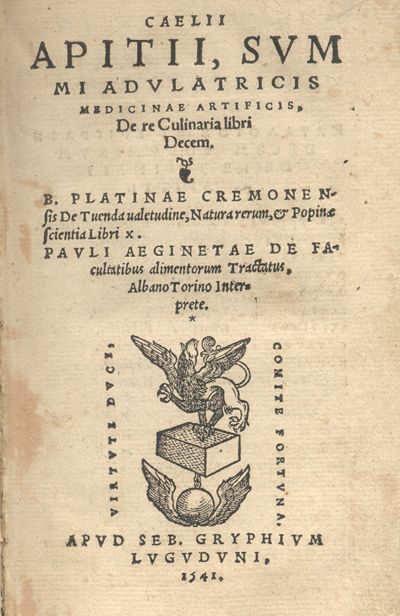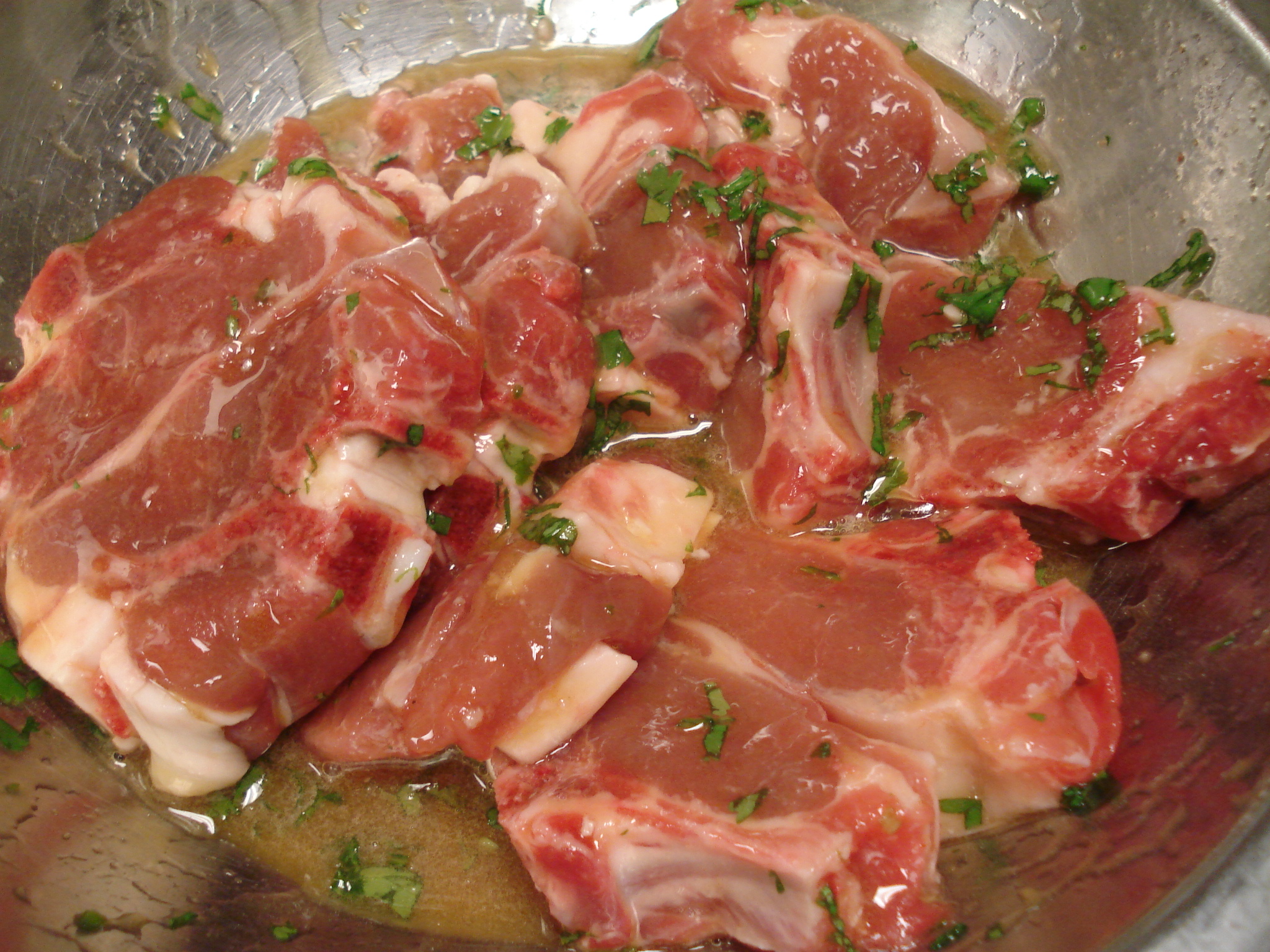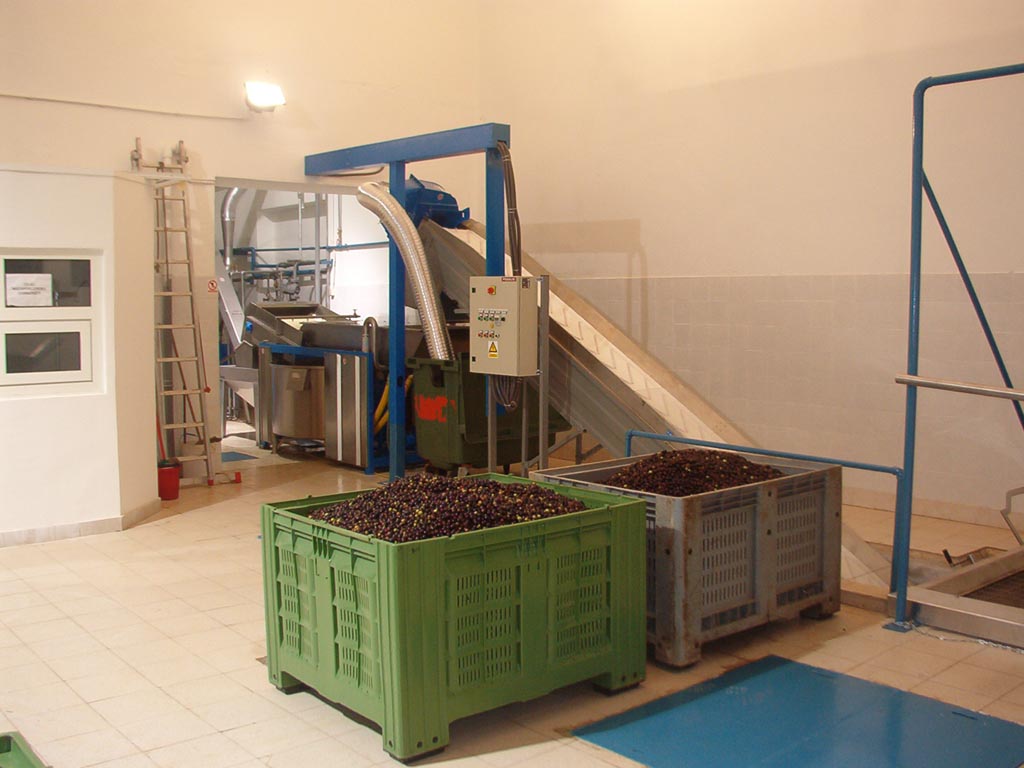|
De Re Coquinaria
''Apicius'', also known as ''De re culinaria'' or ''De re coquinaria'' (''On the Subject of Cooking''), is a collection of Roman cookery recipes, which may have been compiled in the fifth century CE, or earlier. Its language is in many ways closer to Vulgar than to Classical Latin, with later recipes using Vulgar Latin (such as ''ficatum'', ''bullire'') added to earlier recipes using Classical Latin (such as ''iecur'', ''fervere''). The book has been attributed to an otherwise unknown Caelius Apicius, an invention based on the fact that one of the two manuscripts is headed with the words "API CAE" or rather because a few recipes are attributed to Apicius in the text: Patinam Apicianam sic facies (IV, 14) Ofellas Apicianas (VII, 2). It has also been attributed to Marcus Gavius Apicius, a Roman gourmet who lived sometime in the 1st century CE during the reign of Tiberius. The book also may have been authored by a number of different Roman cooks from the first century CE. Man ... [...More Info...] [...Related Items...] OR: [Wikipedia] [Google] [Baidu] |
Coriander
Coriander (), whose leaves are known as cilantro () in the U.S. and parts of Canada, and dhania in parts of South Asia and Africa, is an annual plant, annual herb (''Coriandrum sativum'') in the family Apiaceae. Most people perceive the leaves as having a fresh, slightly citrus taste. Due to variations in the gene OR6A2, some people perceive it to have a soap-like taste, or even a pungent or rotten taste. It is native to the Mediterranean Basin. All parts of the plant are edible, but the fresh leaves and the dried seeds are the parts most traditionally used in cooking. It is used in certain cuisines, like Mexican cuisine, Mexican, Indian cuisine, Indian and Southeast Asian cuisine, Southeast Asian. Description It is a soft plant growing to tall. The leaves are variable in shape, broadly lobed at the base of the plant, and slender and feathery higher on the flowering stems. The flowers are borne in small umbels, white or very pale pink, asymmetrical, with the petals ... [...More Info...] [...Related Items...] OR: [Wikipedia] [Google] [Baidu] |
Apicius 1709
''Apicius'', also known as ''De re culinaria'' or ''De re coquinaria'' (''On the Subject of Cooking''), is a collection of Roman cookery recipes, which may have been compiled in the fifth century CE, or earlier. Its language is in many ways closer to Vulgar than to Classical Latin, with later recipes using Vulgar Latin (such as ''ficatum'', ''bullire'') added to earlier recipes using Classical Latin (such as ''iecur'', ''fervere''). The book has been attributed to an otherwise unknown Caelius Apicius, an invention based on the fact that one of the two manuscripts is headed with the words "API CAE" or rather because a few recipes are attributed to Apicius in the text: Patinam Apicianam sic facies (IV, 14) Ofellas Apicianas (VII, 2). It has also been attributed to Marcus Gavius Apicius, a Roman gourmet who lived sometime in the 1st century CE during the reign of Tiberius. The book also may have been authored by a number of different Roman cooks from the first century CE. Many ... [...More Info...] [...Related Items...] OR: [Wikipedia] [Google] [Baidu] |
Uncial
Uncial is a majuscule script (written entirely in capital letters) commonly used from the 4th to 8th centuries AD by Latin and Greek scribes. Uncial letters were used to write Greek and Latin, as well as Gothic, and are the current style for Coptic and Nobiin. Development Early uncial script most likely developed from late rustic capitals. Early forms are characterized by broad single-stroke letters using simple round forms taking advantage of the new parchment and vellum surfaces, as opposed to the angular, multiple-stroke letters, which are more suited for rougher surfaces, such as papyrus. In the oldest examples of uncial, such as the fragment of '' De bellis macedonicis'' in the British Library, of the late 1st–early 2nd centuries, all of the letters are disconnected from one another, and word separation is typically not used. Word separation, however, is characteristic of later uncial usage. As the script evolved over the centuries, the characters became more com ... [...More Info...] [...Related Items...] OR: [Wikipedia] [Google] [Baidu] |
Carolingian Era
The Carolingian Empire (800–887) was a Frankish-dominated empire in Western and Central Europe during the Early Middle Ages. It was ruled by the Carolingian dynasty, which had ruled as kings of the Franks since 751 and as kings of the Lombards in Italy from 774. In 800, Pope Leo III crowned the Frankish king Charlemagne as Roman emperor in return for political protection, disregarding the universalist claims of the weakened Byzantine Empire. The Carolingian Empire is sometimes considered the first phase in the history of the Holy Roman Empire. After a civil war from 840 to 843 following the death of Emperor Louis the Pious, the empire was divided into autonomous kingdoms, with one king still recognised as emperor, but with little authority outside his own kingdom. The unity of the empire and the hereditary right of the Carolingians continued to be acknowledged. In 884, Charles the Fat reunited all the Carolingian kingdoms for the last time, but he was deposed by the Frankish n ... [...More Info...] [...Related Items...] OR: [Wikipedia] [Google] [Baidu] |
Vinidarius
Vinidarius (fl. 5th century AD) was the purported compiler of a small collection of cooking recipes named ''Apici excerpta a Vinidario''. This is preserved in a single 8th‑century uncial manuscript in Latin, claiming to be excerpts from the recipes of ''Apicius''. About Vinidarius himself nothing is known. If he existed, he may have been a Goth; his Latin name suggests a possible Gothic name of Vinithaharjis. There is a very abbreviated epitome entitled ''Apici excerpta a Vinidario'', a "pocket Apicius" by "an illustrious man" named Vinidarius, made as late as the Carolingian era. There is in fact very little overlap with the Apician manual, but the recipes are similar in character, and are usually presented today as an appendix to ''Apicius'': they add to our knowledge of the cuisine of late antiquity. ''Apici excerpta a Vinidario'' survives in a single 8th-century uncial Uncial is a majuscule script (written entirely in capital letters) commonly used from the 4th to 8th ... [...More Info...] [...Related Items...] OR: [Wikipedia] [Google] [Baidu] |
Epitome
An epitome (; , from ἐπιτέμνειν ''epitemnein'' meaning "to cut short") is a summary or miniature form, or an instance that represents a larger reality, also used as a synonym for embodiment. Epitomacy represents "to the degree of." An abridgment differs from an epitome in that an abridgment is made of selected quotations of a larger work; no new writing is composed, as opposed to the epitome, which is an original summation of a work, at least in part. Many documents from the Ancient Greek and Roman worlds survive now only "in epitome," referring to the practice of some later authors (epitomators) who wrote distilled versions of larger works now lost. Some writers attempted to convey the stance and spirit of the original, while others added further details or anecdotes regarding the general subject. As with all secondary historical sources, a different bias not present in the original may creep in. Documents surviving in epitome differ from those surviving only as f ... [...More Info...] [...Related Items...] OR: [Wikipedia] [Google] [Baidu] |
Goat Meat
Goat meat is the meat of the domestic goat (''Capra hircus''). The term 'goat meat' denotes meat of older animals, while meat from young goats is called 'kid meat'. In South Asian cuisine, goat meat is called mutton, along with sheep meat.''Oxford English Dictionary'', 3rd edition, June 2003blend of "goat" in French and "sheep" in French, was coined in 1922 and selected by a trade association; it was adopted by the United States Department of Agriculture in 1928, however the term never caught on and is not encountered in the United States. "Cabrito", a word in Spanish and Portuguese, is the meat of a young, milk-fed goat. It is also known as chivo meat. In cuisine Goat meat is both a staple and a delicacy in the world's cuisines. The cuisines best known for their use of goat include African cuisine, Middle Eastern, Indian, Indonesian, Nepali, Bangladeshi, Pakistani, Abruzzese, Mexican, Caribbean (Jamaica), Haitian cuisine, Dominican cuisine and Ecuadorian. Cab ... [...More Info...] [...Related Items...] OR: [Wikipedia] [Google] [Baidu] |
Lamb And Mutton
Lamb and mutton, collectively sheep meat (or sheepmeat) is one of the most common meats around the world, taken from the domestic sheep, ''Ovis aries'', and generally divided into lamb, from sheep in their first year, hogget, from sheep in their second, and mutton, from older sheep. Generally, "hogget" and "sheep meat" aren't used by consumers outside Norway, New Zealand, South Africa, Scotland, and Australia. Hogget has become more common in England, particularly in the North (Lancashire and Yorkshire) often in association with rare breed and organic farming. In South Asian and Caribbean cuisine, "mutton" often means goat meat.''Oxford English Dictionary'', 3rd edition, June 2003Italian, make similar or even more detailed distinctions among sheep meats by age and sometimes by sex and diet—for example, ''lechazo'' in Spanish refers to meat from milk-fed (unweaned) lambs. Classifications and nomenclature The definitions for lamb, hogget and mutton vary considerably between ... [...More Info...] [...Related Items...] OR: [Wikipedia] [Google] [Baidu] |
Wheat Starch
Starch or amylum is a polymeric carbohydrate consisting of numerous glucose units joined by glycosidic bonds. This polysaccharide is produced by most green plants for energy storage. Worldwide, it is the most common carbohydrate in human diets, and is contained in large amounts in staple foods such as wheat, potatoes, maize (corn), rice, and cassava (manioc). Pure starch is a white, tasteless and odorless powder that is insoluble in cold water or alcohol. It consists of two types of molecules: the linear and helical amylose and the branched amylopectin. Depending on the plant, starch generally contains 20 to 25% amylose and 75 to 80% amylopectin by weight. Glycogen, the energy reserve of animals, is a more highly branched version of amylopectin. In industry, starch is often converted into sugars, for example by malting. These sugars may be fermented to produce ethanol in the manufacture of beer, whisky and biofuel. In addition, sugars produced from processed starch are used ... [...More Info...] [...Related Items...] OR: [Wikipedia] [Google] [Baidu] |
Wine
Wine is an alcoholic drink made from Fermentation in winemaking, fermented fruit. Yeast in winemaking, Yeast consumes the sugar in the fruit and converts it to ethanol and carbon dioxide, releasing heat in the process. Wine is most often made from grapes, and the term "wine" generally refers to grape wine when used without any qualification. Even so, wine can be made fruit wine, from a variety of fruit crops, including plum, cherry, pomegranate, blueberry, Ribes, currant, and Sambucus, elderberry. Different varieties of grapes and Strain (biology), strains of yeasts are major factors in different styles of wine. These differences result from the complex interactions between the Biochemistry, biochemical development of the grape, the reactions involved in fermentation, the grape's growing environment (terroir), and the wine production process. Many countries enact legal appellations intended to define styles and qualities of wine. These typically restrict the geographical origin ... [...More Info...] [...Related Items...] OR: [Wikipedia] [Google] [Baidu] |
Cooking Oil
Cooking oil (also known as edible oil) is a plant or animal liquid fat used in frying, baking, and other types of cooking. Oil allows higher cooking temperatures than water, making cooking faster and more flavorful, while likewise distributing heat, reducing burning and uneven cooking. It sometimes imparts its own flavor. Cooking oil is also used in food preparation and flavoring not involving heat, such as salad dressings and bread dips. Cooking oil is typically a liquid at room temperature, although some oils that contain saturated fat, such as coconut oil, palm oil and palm kernel oil are solid. There are a wide variety of cooking oils from plant sources such as olive oil, palm oil, soybean oil, canola oil ( rapeseed oil), corn oil, peanut oil, sesame oil, sunflower oil and other vegetable oils, as well as animal-based oils like butter and lard. Oil can be flavored with aromatic foodstuffs such as herbs, chilies or garlic. Cooking spray is an aerosol of coo ... [...More Info...] [...Related Items...] OR: [Wikipedia] [Google] [Baidu] |






